Holocaust
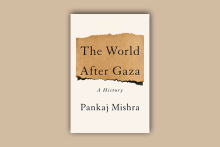
PANKAJ MISHRA OPENS The World After Gaza: A History with the 1943 Warsaw ghetto uprising in German-occupied Poland. The Jews imprisoned in the ghetto fought their Nazi captors for “a few desperate weeks” until they were crushed. Mishra quotes one of few survivors, Marek Edelman, who “was ‘terribly afraid’ that ‘nobody in the world would notice a thing,’ and ‘nothing, no message about us, would ever make it out.’”
The Israel Defense Forces’ ongoing destruction of Gaza following the Oct. 7, 2023, attack on Israeli civilians by Hamas has been livestreamed by journalists, mothers, and teenagers. Globally, many suffered “an inner wound,” Mishra writes, from watching these cruelties: Israel’s bombs targeting children, schools, and hospitals; military dogs mauling disabled Palestinians; and IDF soldiers denying starving people access to food. Despite Palestinian efforts to broadcast the war crimes, Gaza still burns. Mishra contrasts reactions to the atrocities in 1943 Warsaw and in Gaza today to explore Western state-sanctioned violence.
Although Western Allies pledged never to let the genocide of the Holocaust happen again — a promise that has defined Western morality for decades — the violence unleashed in World War II death camps has been repeated across the globe in Japan, Vietnam, Rwanda, Iraq, Syria, and Gaza.
Mishra, a British Indian writer, links the rhetoric of Israel’s ethno-state to the Hindu nationalism of his native India. From a Hindu Brahmin family, Mishra recalls his childhood admiration of Israel’s leaders and how he, and many other Hindu nationalists, admired their macho tactics.
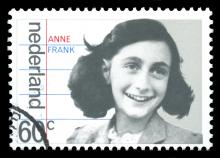
In Anne Frank, the world remembers a light of courage, even hope — a girl who lived and loved and laughed in the face of immense terror.
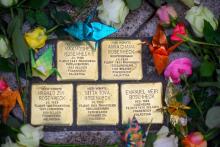
In 1935, across the river from where my family lived, the Nazi-run parliament unanimously passed the Reich Citizenship Law. A deepening of the already emerging racial regime, this law categorized who was a German citizen, initially stripping those of Jewish descent of their citizenship. Proof of Aryan descent became essential to maintain or gain citizenship, and this was done primarily through both ancestral birth certificates and ecclesial baptismal records. This use of sacramental records meant that, according to historian Kyle Jantzen, “Churches became the most important site for the implementation of Nazi racial segregation.”
With their citizenship stripped from them and sensing the deadly direction Germany was headed, my great-grandmother acquired forged baptismal certificates and the family fled. Initially escaping to Palestine, they eventually made their way to the U.S. I was raised Christian. But I still struggle with this, now being a part of the faith that inflicted displacement upon my family. I lack a coherent emotional grasp of this story, but I can feel the rough shape of the loss. That loss is unexpectedly present, something I stumble over. But in this stumbling is a small, personal grace that has transformed my faith, bringing me to worship a God who is not simply for the oppressed but engages in the work of liberation.

WE'D ALL LIKE to think that empathy is a primary motivator in our lives. The ability to understand and share the emotions of another feels like an intrinsically human characteristic. But what happens when society erodes our collective empathy in service of a very individualistic worldview; when the world asks us time and time again to gloss over our mistakes instead of learning from them? Who are we to each other when we stop asking questions about the impacts and consequences of our actions?
Recently the Conference on Jewish Material Claims Against Germany released the first-ever 50-state survey conducted on Holocaust knowledge among millennials and Generation Z in the U.S. The data is alarming.
More than 60 percent of survey respondents did not know that 6 million Jews were murdered during the Holocaust; nearly 50 percent could not name a single concentration or work camp, though there were more than 40,000 in operation during World War II; and more than 10 percent believed that Jews themselves caused the Holocaust.

However, overall respondents conveyed a desire for compulsory education of this horrific time in history, with 64 percent of American millennials and Gen Zers expressing that Holocaust education should be compulsory in school.
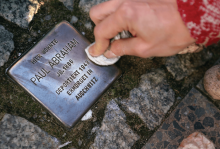
I AM TERRIFIED of tripping. Thanks to a couple memorable tumbles over the years—the most recent of which involved a face-plant while on a run—I always double-knot my shoelaces and look down at my feet when I walk. Remaining steady and stable is always in the back of my mind.
But on a trip to Berlin in 2017, I found myself repeatedly tripping over something in the ground. The source of my stumbling, I soon learned, were Stolpersteine, which translates literally to “stumbling stones,” or more metaphorically, “stumbling blocks.” Stolpersteine are cobblestone-sized bronze plaques embedded in streets and sidewalks throughout Europe, each slightly raised above ground level and engraved with the name and life dates of a Holocaust victim, including murdered Jews, members of the LGBTQ+ community, Sinti and Roma people, people with physical or intellectual disabilities, and other ethnic and political minorities.
These commemorative stones are part of an ongoing art project, installed at the last place each person lived or worked before falling victim to Nazi crimes. Above each engraved name are the words “hier wohnte,” or “here lived,” serving as a reminder that this person did not build their life just anywhere, but right here. Each day they walked on this ground.
Each is unique
THE IDEA FOR Stolpersteine began in 1991, when artist Gunter Demnig painted a white line through the streets of Cologne to trace the deportation of 1,000 Sinti and Roma who were forced out of the city just 50 years prior. “An old lady stopped by and scolded my work, insisting there had never been any Gypsies in Cologne,” said Demnig. Her denial prompted Demnig to find a way to more permanently preserve the memory of those killed in the Holocaust.
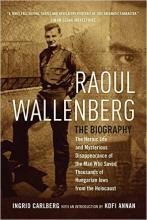
IN THE EARLY 1940s, Raoul Wallenberg was a slight, balding young man living modestly in Stockholm. He worked for a trading company that imported Hungarian poultry to Sweden. Wallenberg’s colleagues were mainly Hungarian Jews.
He had trained in the U.S. to be an architect. But on his return to Sweden, Wallenberg discovered that he didn’t have the engineering courses required to be hired in his homeland. His other career alternative, banking, also eluded him. The extended Wallenberg family owned one of Sweden’s most prosperous banks, Stockholms Enskilda Bank. But they found Wallenberg to be overly talkative, too artistically inclined, and having a penchant for drama that did not signal, for them, the makings of a top-drawer Swedish banker. So Wallenberg fell into depression, feeling that he was a failure, now known to his family disparagingly as “the grocer.”
Yet this unfulfilled young man would become, virtually overnight, one of the great heroes of World War II.
Veteran Swedish journalist Ingrid Carlberg has written a remarkable, nuanced, 600-page biography featuring extensive original research and new material: Raoul Wallenberg: The Heroic Life and Mysterious Disappearance of the Man Who Saved Thousands of Hungarian Jews from the Holocaust. The English translation of this award-winning work was released earlier this year.
When the Germans sent 500 Norwegians to Auschwitz in late 1942, the outraged Swedish government, which had remained neutral, declared that Sweden would accept any Jew who could make it to the Swedish border. They also decided to set up a special humanitarian aid mission in Budapest to help Hungarian Jews being annihilated by Hitler’s troops. A colleague at the trading company immediately recommended Wallenberg to the Swedish Foreign Mission to head the new mission.

“There are hundreds of web pages of Holocaust denial” in the Arab world “but almost nothing in Arabic that combats this denial,” Saadoun said. “We’re teaching Arabs about their own history.”

But with Holocaust Memorial Day coming up on Jan. 27, the anniversary of the 1945 liberation of Auschwitz, her Christian Democrats have decided to wait no longer. They want the Bundestag, the German parliament, to pass a resolution calling for migrants who promote hatred of Jews to be expelled.
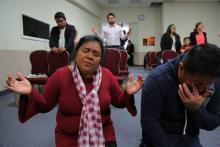
Even more difficult than the question of whether or not we are collectively willing to break the law is the question of whether we are ready to embody what a “culture of sanctuary” holistically invites us to be.

During our nearly 40 years of friendship, I led several interreligious missions with Keeler, including meetings with then-Pope John Paul II at the Vatican. We co-led trips to Israel, including a visit to a civilian bomb shelter, and a poignant painful pilgrimage to the infamous death camps of Auschwitz-Birkenau.
Sometimes public figures can seem distant and impersonal, but that was never the case with the always gracious and welcoming Keeler.

A decade ago, a critic accused me of writing a book about a “nonexistent” threat from the religious right. One reviewer called my work a “paranoid rant,” while another detractor wrote my “alarmist” views were “exaggerated and implausible.”
In The Baptizing of America: The Religious Right’s Plans For The Rest Of Us, published in 2006, I had warned that a well-financed and highly organized group of religious and political leaders was seeking to impose their narrow extremist beliefs and harsh public policies on the United States, even as our nation’s population was increasingly multireligious, multiethnic, and multiracial.
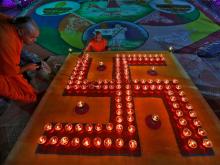
In one weekend, the swastika appeared in public places in three U.S. cities — Houston, Chicago, and New York. The sight was so offensive, average New Yorkers pulled out hand sanitizer and tissues to wipe the graffiti from the walls of the subway where it had been scrawled.
“Within about two minutes, all the Nazi symbolism was gone,” one subway rider who was there said. He added, “Everyone kind of just did their jobs of being decent human beings.”
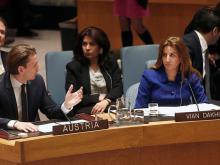
As the only female Yazidi in the Iraqi Parliament, Dakhil fought tirelessly for international assistance to stop the violence, including sexual slavery, targeting her beleaguered people.
Now she has been awarded the Lantos Human Rights Prize in Washington, D.C. But she is unlikely to make the ceremony on Feb. 8, since President Donald Trump banned all travelers from Iraq.

Pope Francis on July 29 paid a silent visit to the Auschwitz concentration camp where he spent intense moments in prayer, embraced Holocaust survivors, and met those who risked their lives to help Jews persecuted by the Nazis.
But while Francis made no speeches during his time at the notorious camp, where more than 1 million people, mostly Jews, died during World War II, he left a simple written plea in the guest book: “Lord, have mercy on your people! Lord, forgiveness for so much cruelty!”

I remember talking to my mom on my walk into work not long after the death of Freddie Gray. She had been watching the news and was wondering what my sense of things was on the ground.
“Are there protests?” she asked. “Are people upset?”

Elie Wiesel’s death is inspiring an outpouring of grief and gratitude from leaders in the religious and political worlds, and ordinary people alike.

A 94-year-old former SS guard at Auschwitz was convicted in a German court of complicity in the murder of 170,000 people at the Nazi death camp and sentenced to five years in jail, according to media reports.
The verdict in the case against Reinhold Hanning was announced June 17 by the judge presiding over what is likely Germany’s last Holocaust trials, Reuters reported. Hanning, who could have faced a 15-year sentence, will remain free pending any appeals.
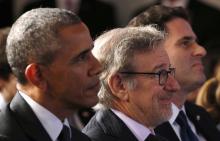
President Obama warned of growing anti-Semitism in the United States and the world as he honored two Americans and two Poles who helped save Jewish lives during World War II.
“Here, tonight, we must confront the reality that around the world, anti-Semitism is on the rise. We cannot deny it,” Obama said at a Holocaust remembrance ceremony at the Israeli embassy Jan. 27. He cited Jews fleeing European cities; attacks on Jewish centers in Mumbai, India and Overland Park, Kan.; and swastikas on college campuses.

Jan. 27 is International Holocaust Remembrance Day, the date the United Nations has chosen to commemorate victims of the Holocaust during World War II. Six million Jews were murdered by Germany’s Nazi regime, along with 5 million non-Jews who were killed. The anniversary, marked each year since 2005, falls on the anniversary of the liberation of the Auschwitz-Birkenau death camp in Poland by the Russian army in 1945. One million people died there.